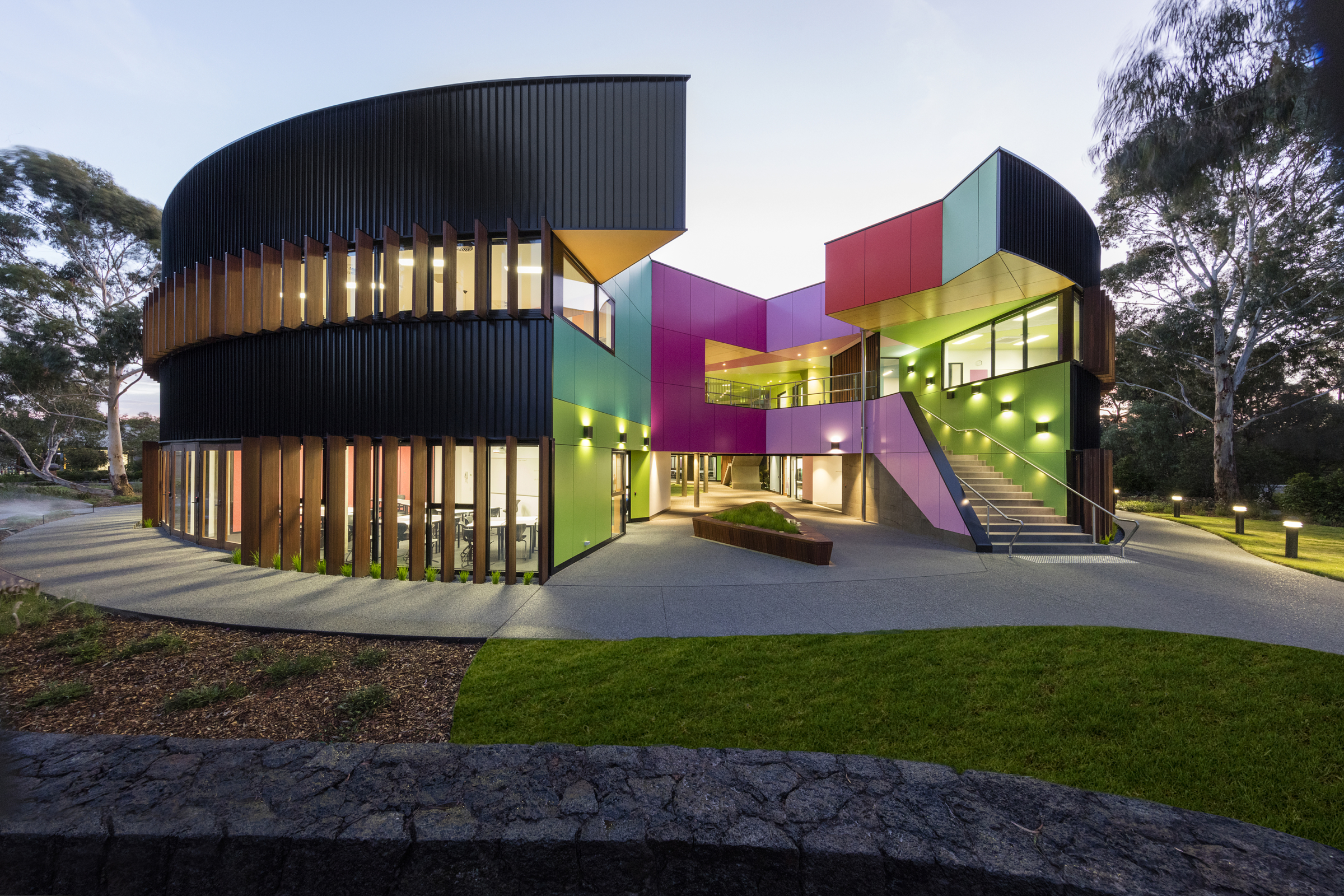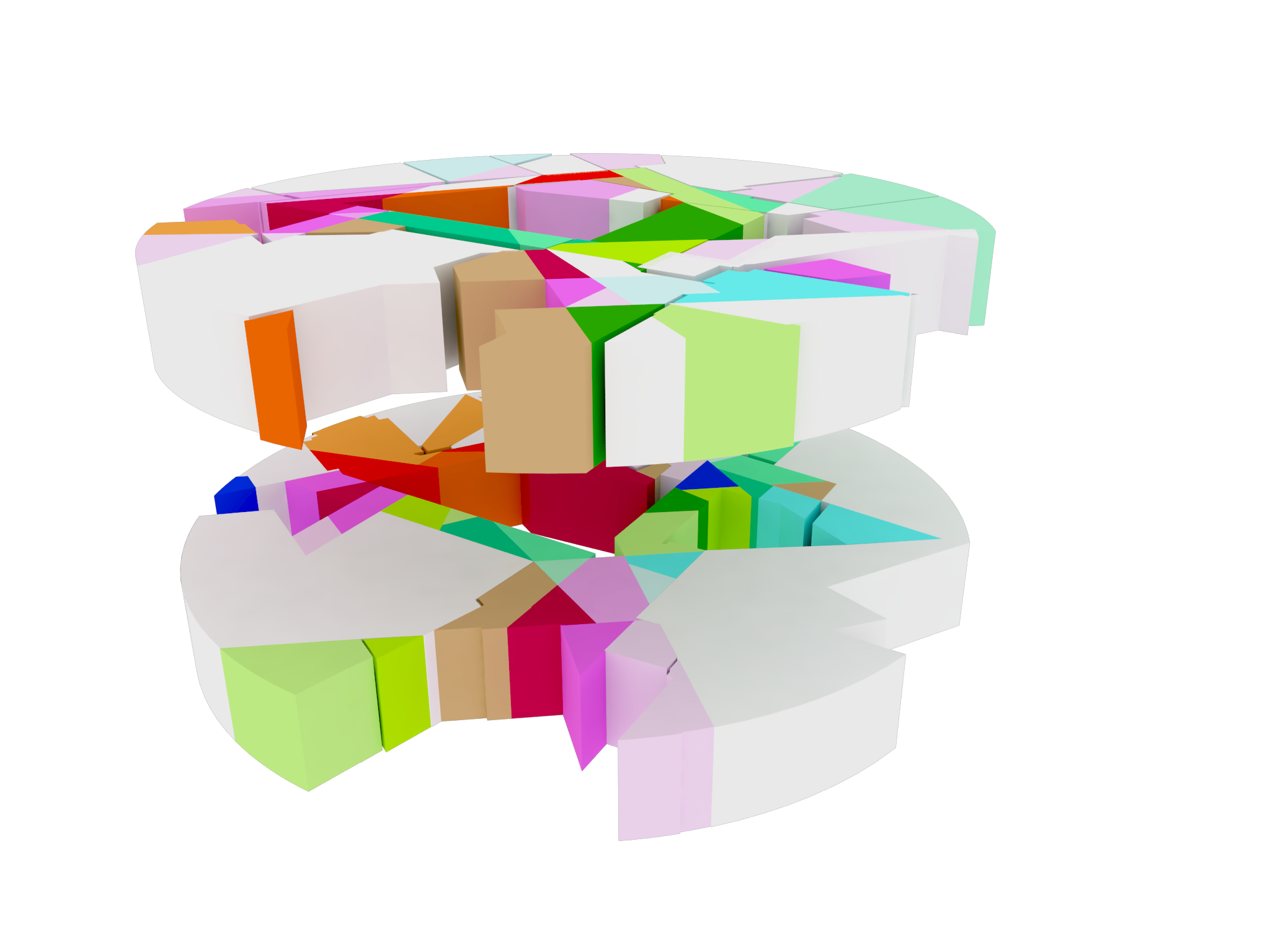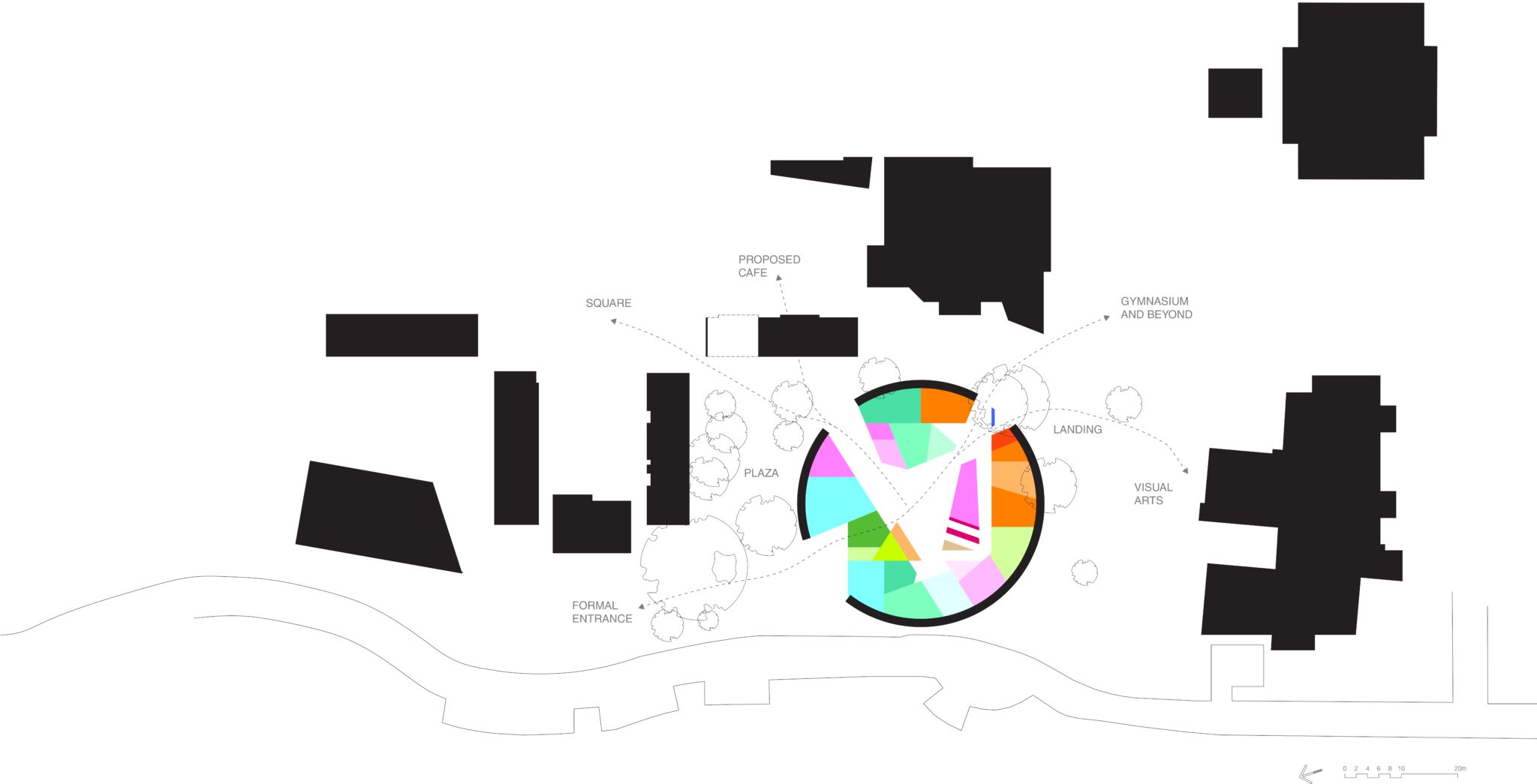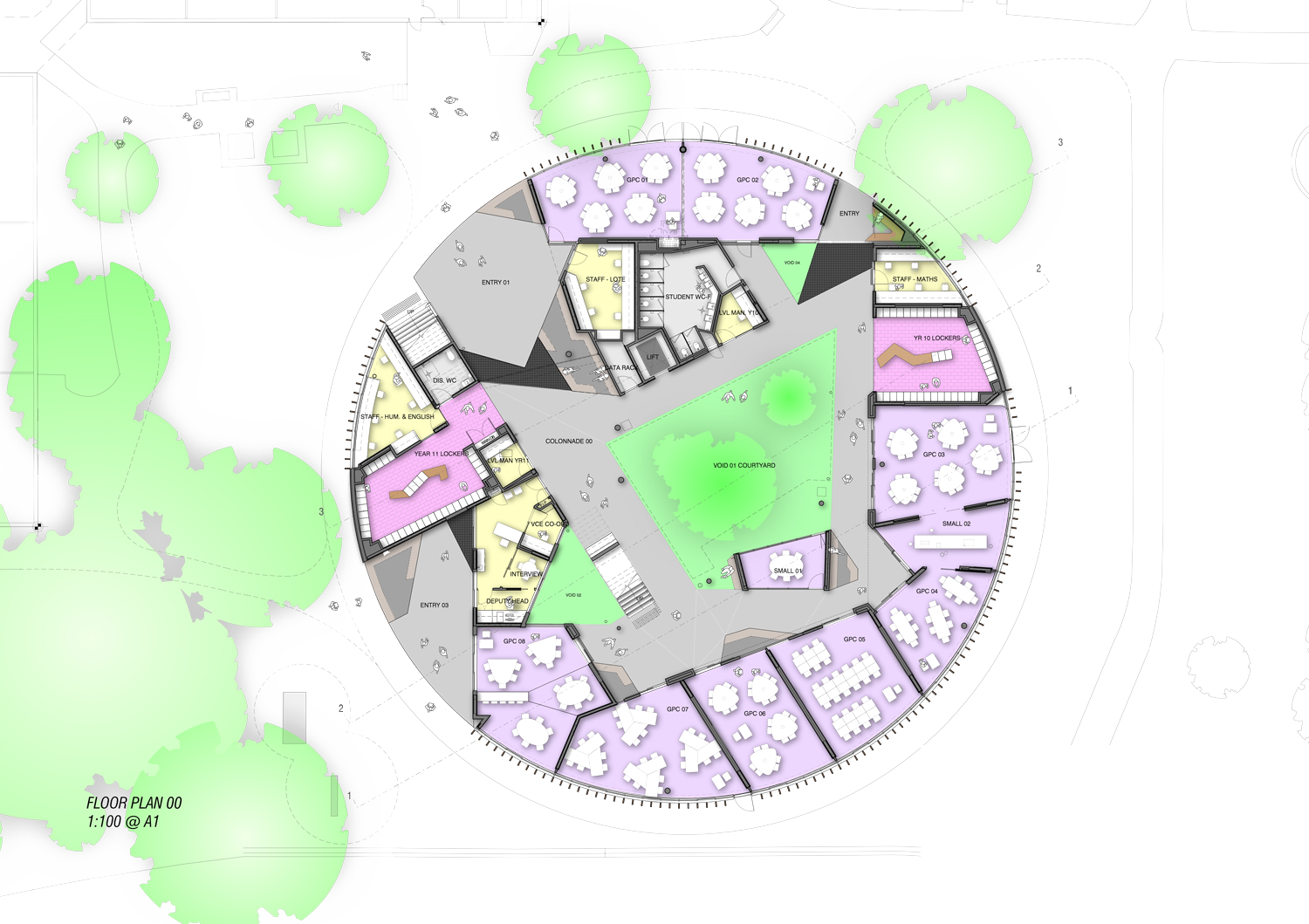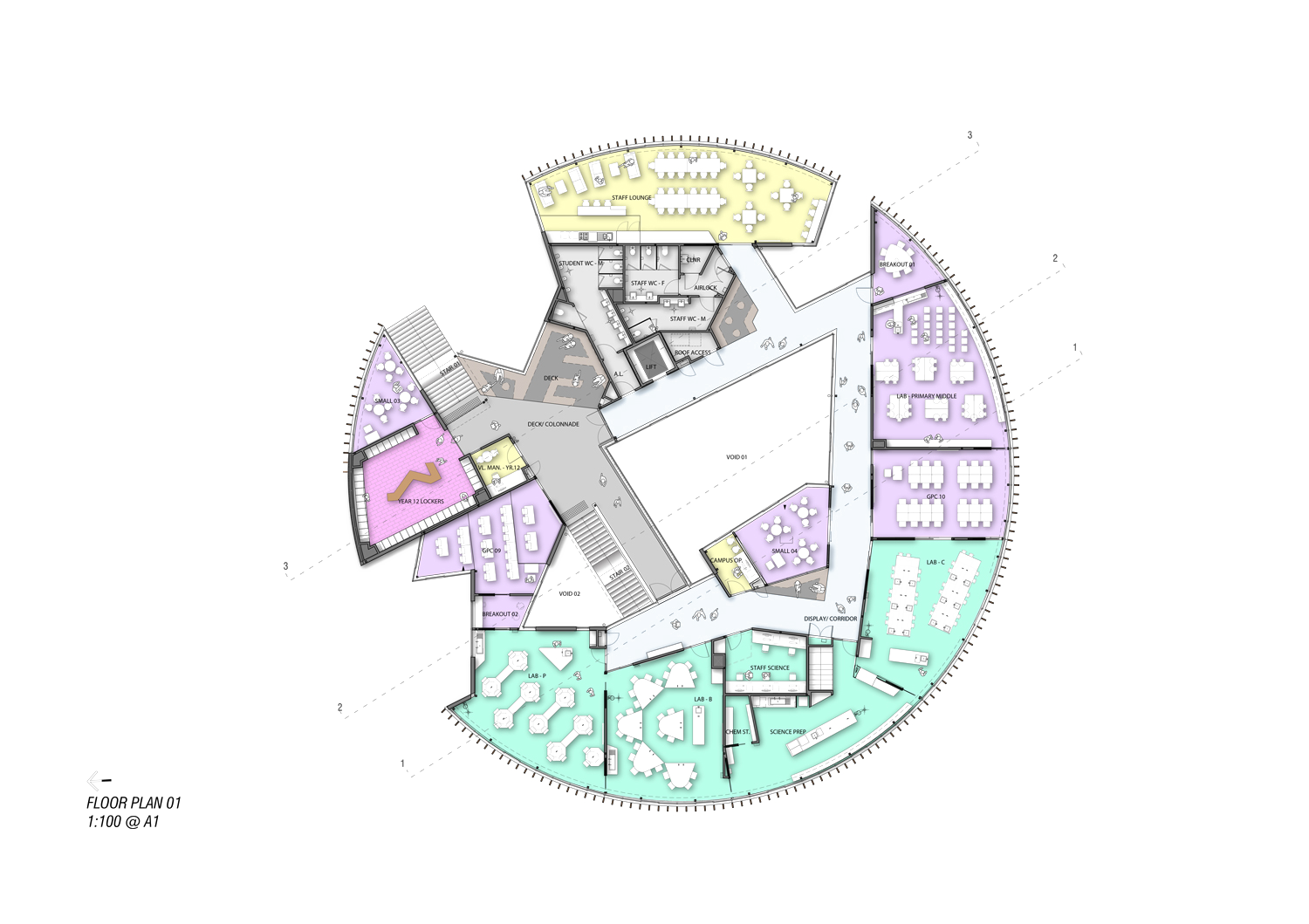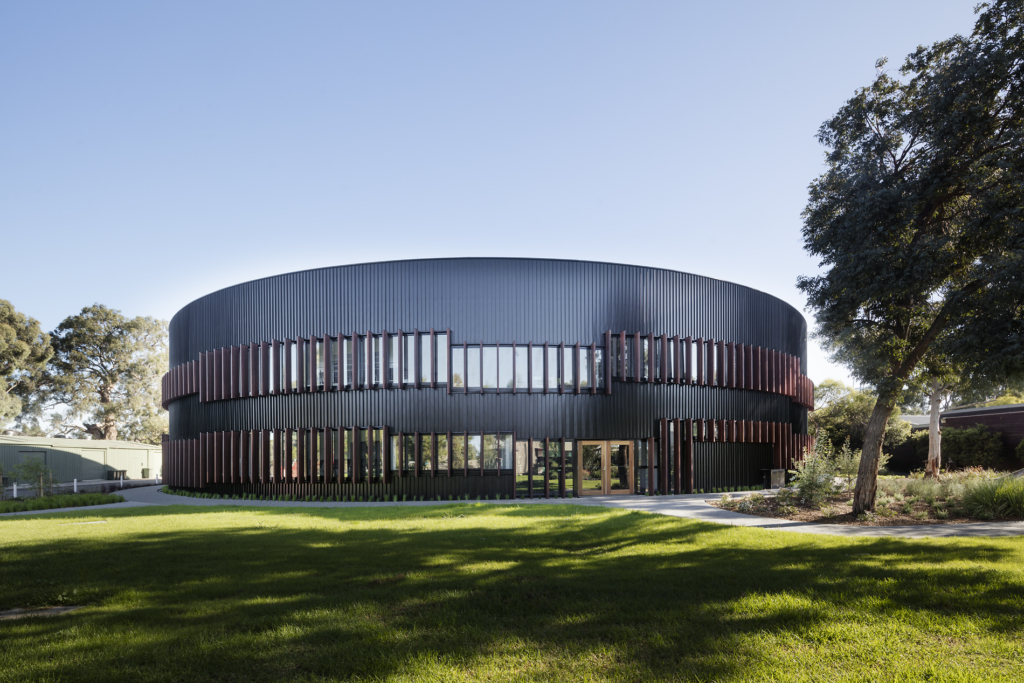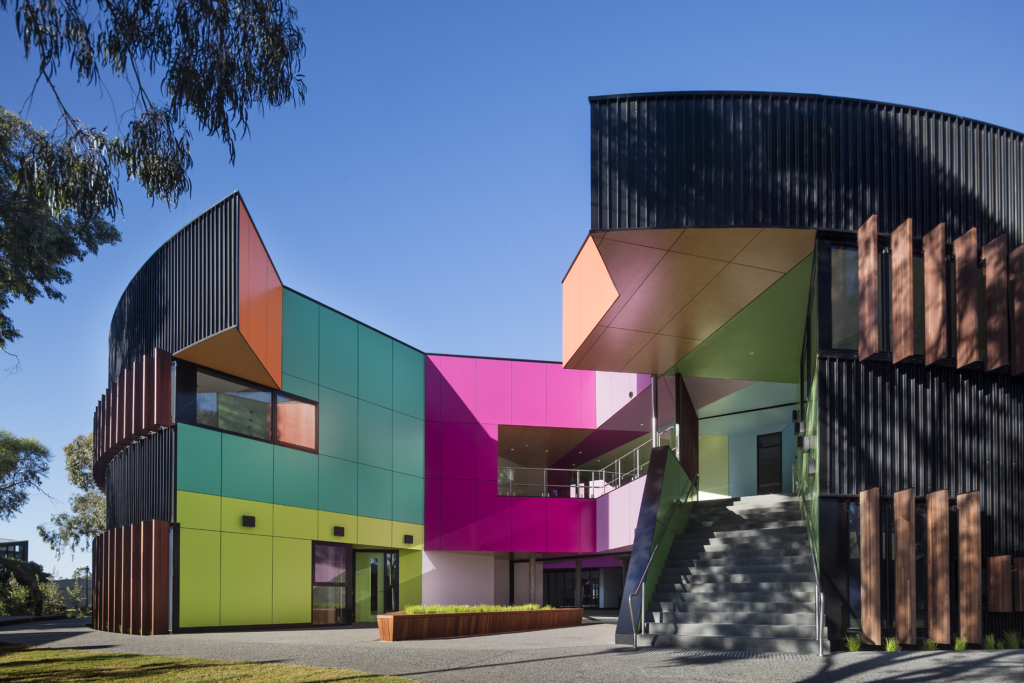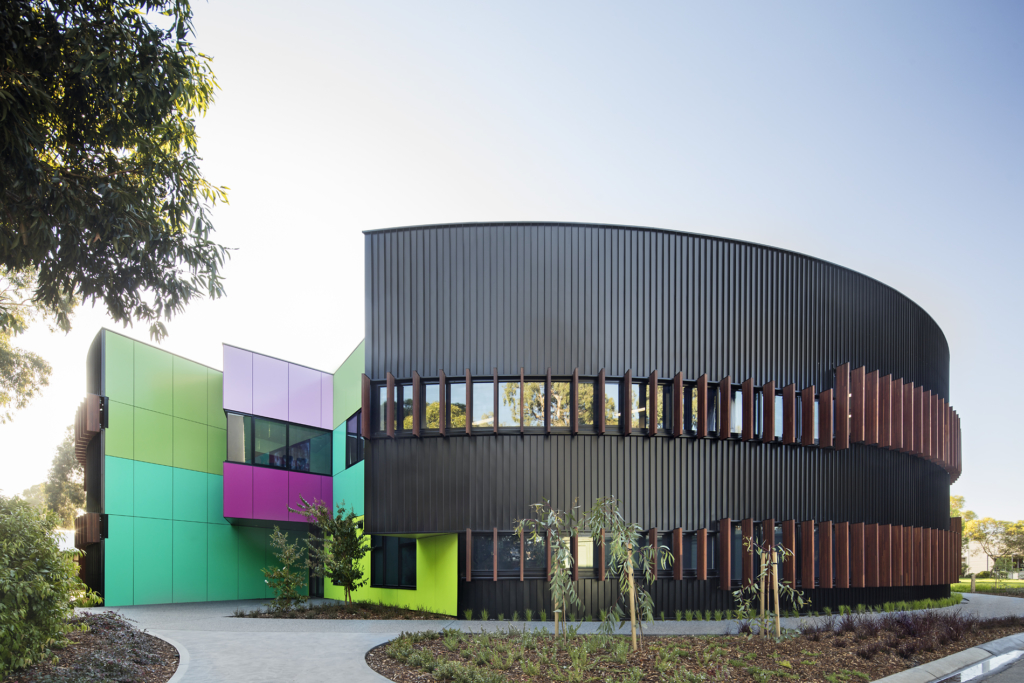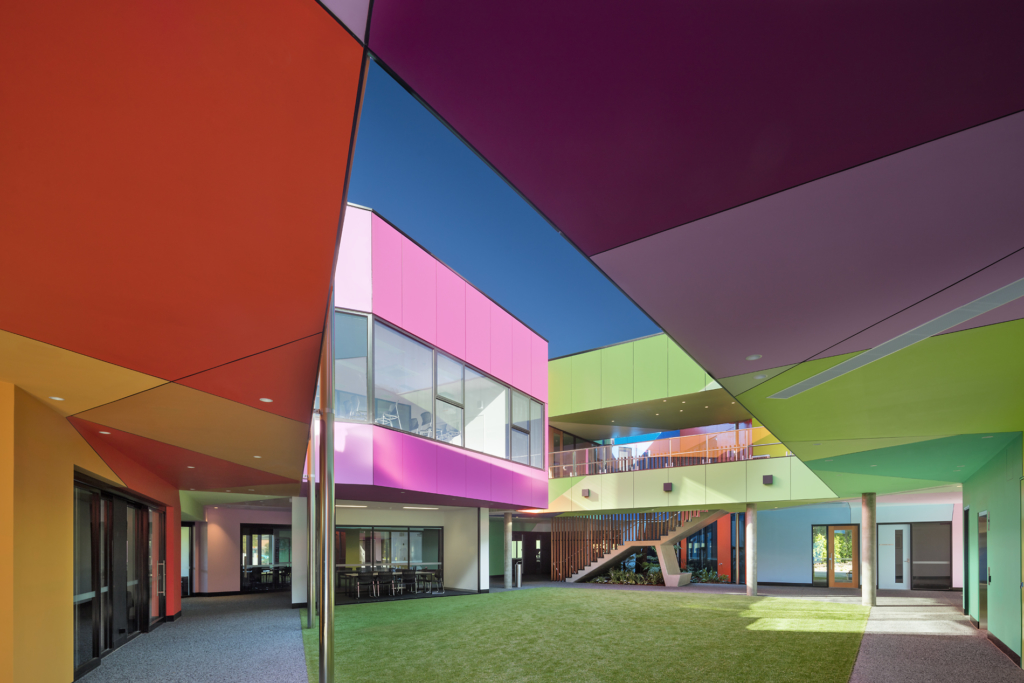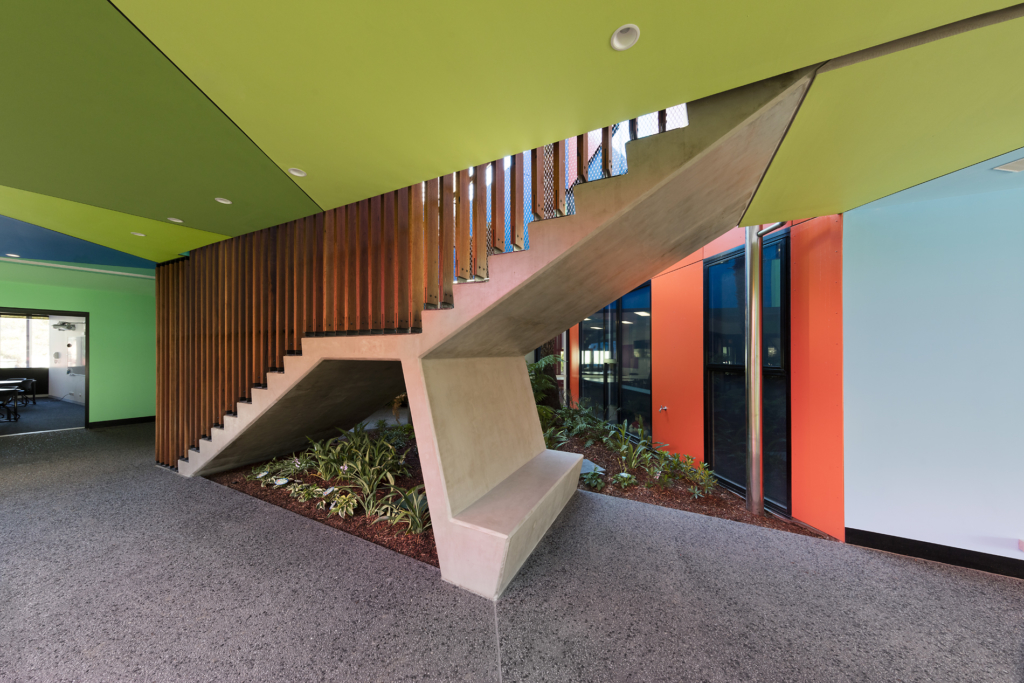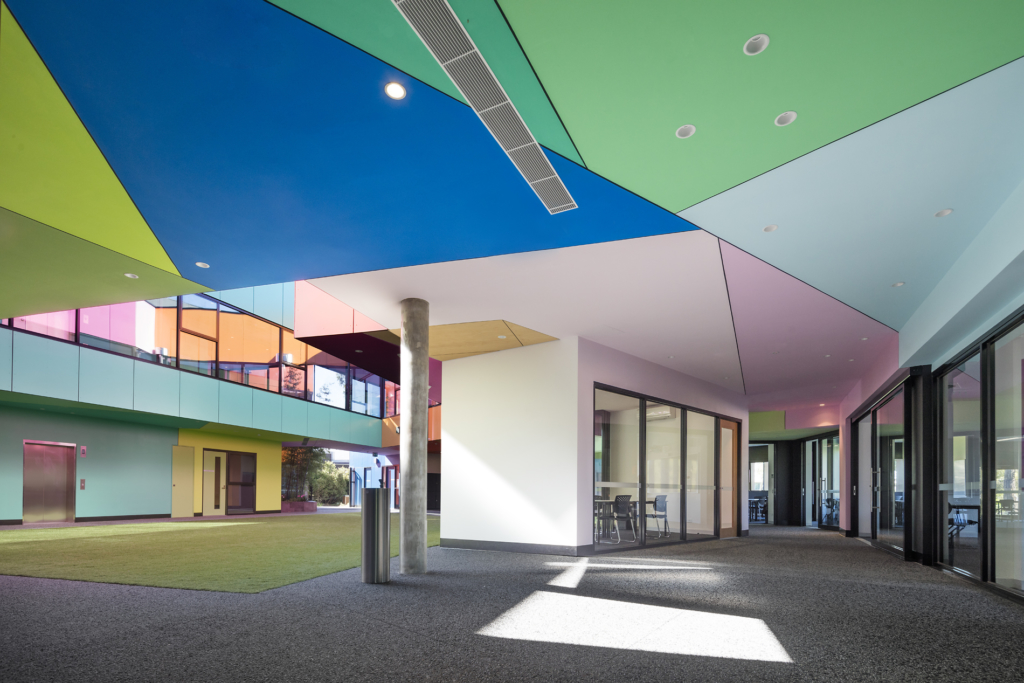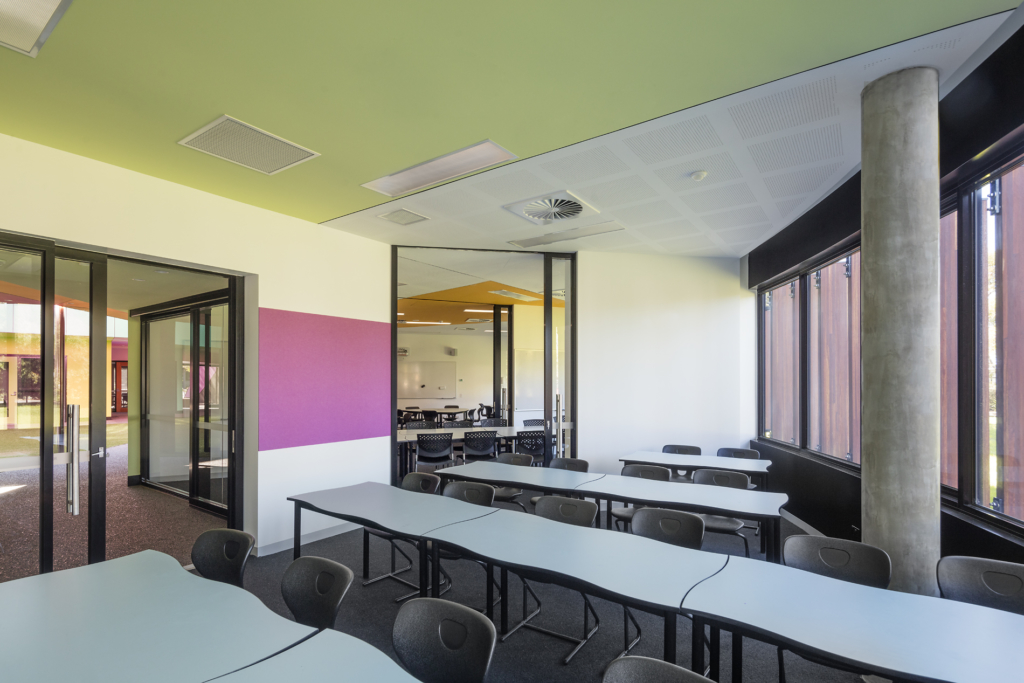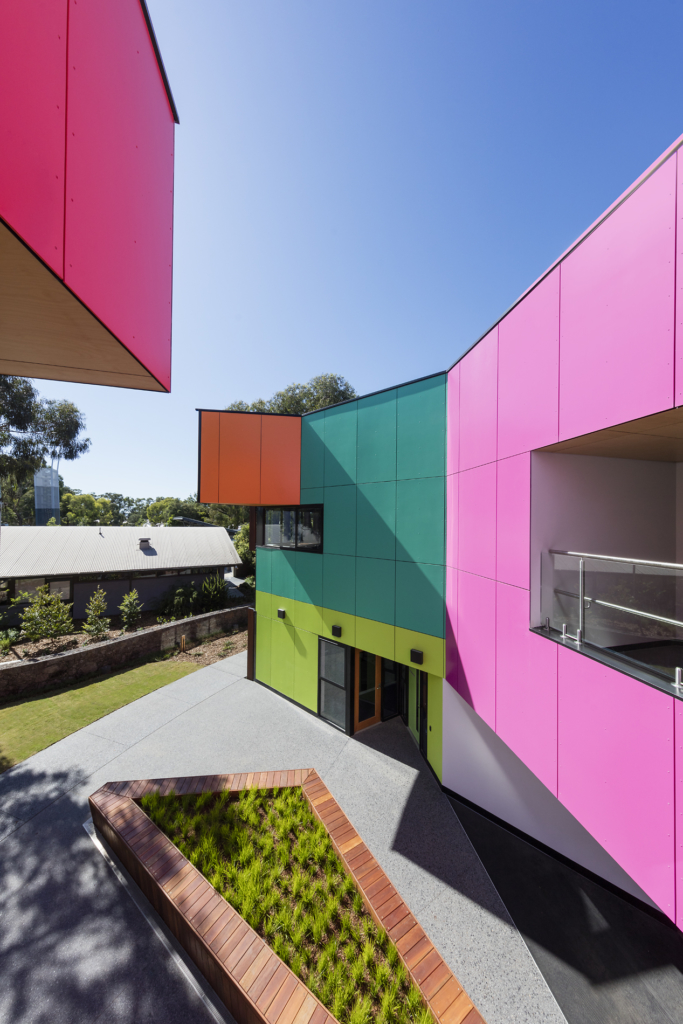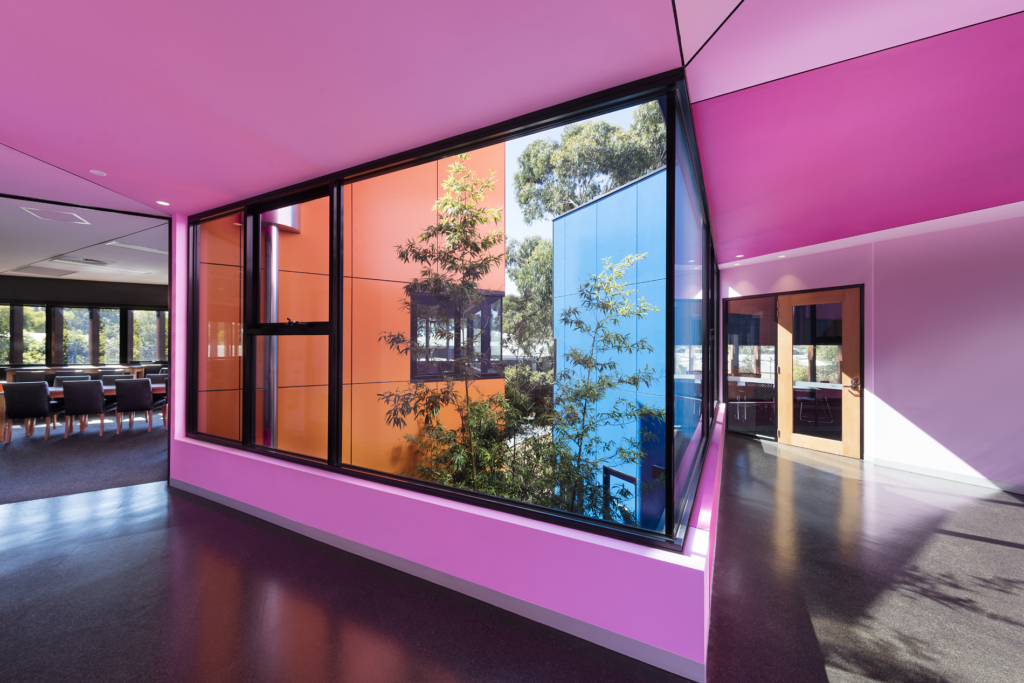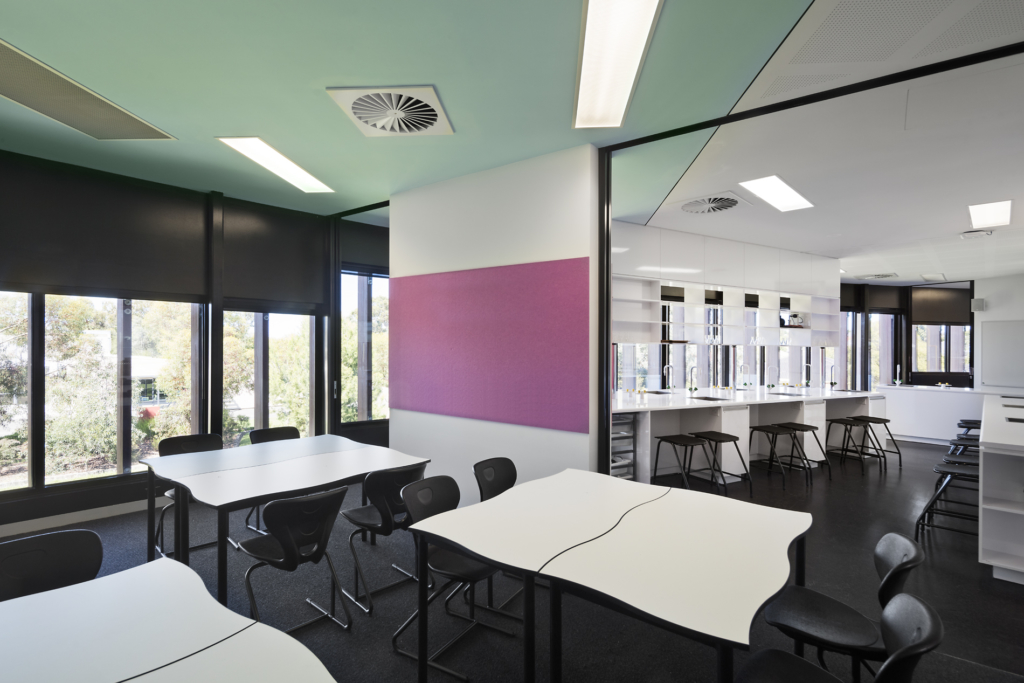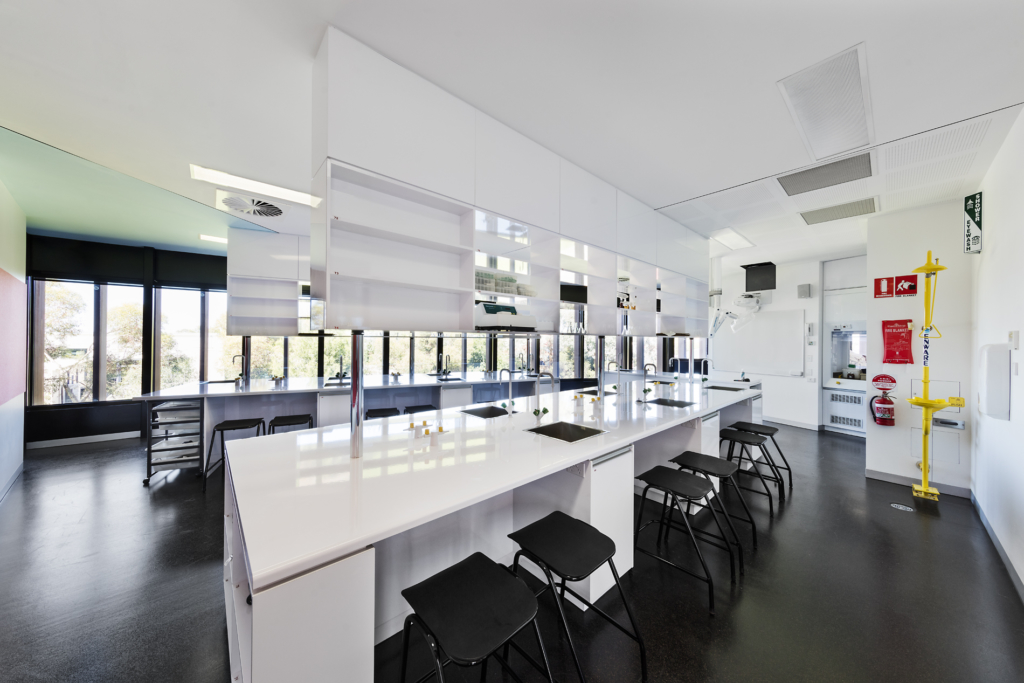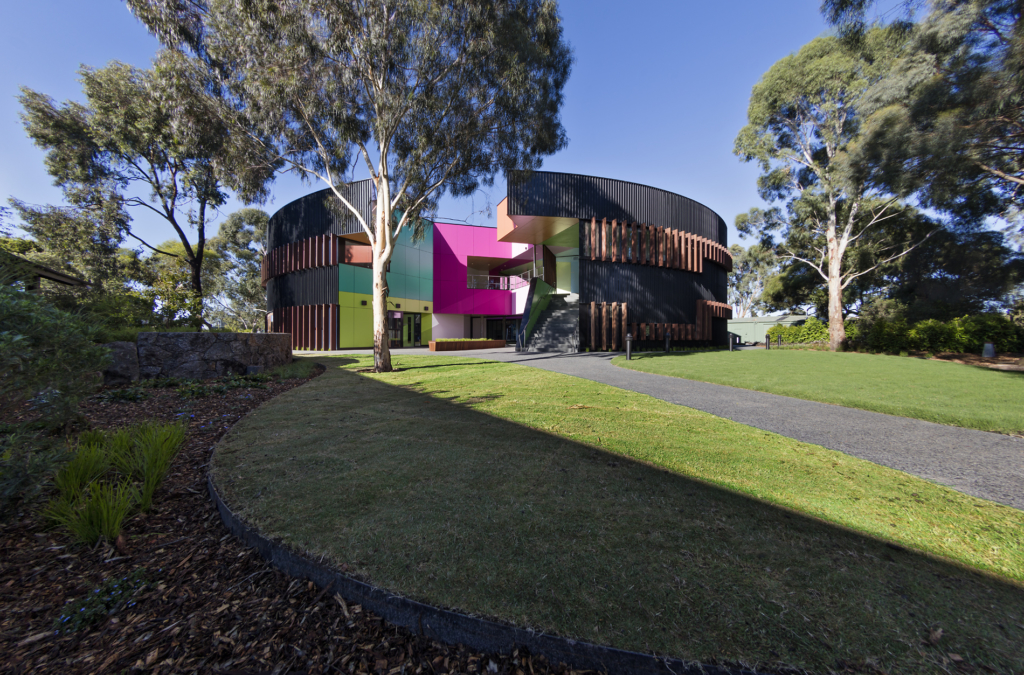Our brief was for a new Science and Senior Years Centre. The key characteristics of the learning spaces were transparency, the variety of spatial type, multiple-use, flexibility, adaptability, and interconnectivity between the learning spaces and to the outside environment.
The circular shaped plan form was adopted for the building; this shape had an appropriate civic quality which built upon the schools original masterplan. However, rather than adopting a circular or radial pattern we choose to overlay an angular geometry. This geometry was used to define the central courtyards, the light wells and a mosaic of learning spaces. This geometry contrasts with the buildings circular shape, highlighting key entry points and providing a distinction between the outer world (singular, civic, circular, executed in a muted landscape palate) and the inner world (complex, dynamic, expressive & colourful).
The contrast so evident in this building’s language encapsulates the contemporary methodologies for a well-rounded education. The circular form is classical, representing order, and the certainty of knowledge – the building’s inner world, with its expressive and complex mosaic of spaces, represents the uncertainty and complexity of modern life and scientific understanding, and the necessity of the qualities of wonder and imagination to see us through.

